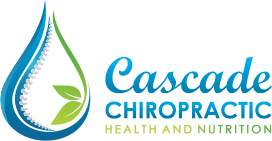If, “What you see is what you get”, like the saying goes, we might want to think about the gift of sight just a little more seriously.
In the US more than 20% of teenagers wear glasses. 53% of adults between the ages of 18 and 34 wear glasses and 77% of adults over 55 wear corrective lenses!
A study done by Rose et al (2008) Archives of Opthalmology compared the sight of children in Singapore vs Sydney. In Singapore a child spends an average of 3 hours per week outside compared to a child in Sydney who spends an average of 14 hours per week outside. The shocking facts are that 29% of children in Singapore required glasses while only 3% of those in Sydney did. The hypothesis was that there are perspectives that the brain and eyes acquire when you’re outside that you simply don’t get reading, working on a computer and looking at a screen! Very interesting, don’t you think?
Let’s look next at the most common issues of the aging eye. They include macular degeneration, glaucoma and cataracts.
- Macular Degeneration: Macular degeneration is common over the age of 60. Smoking is often a factor. Central vision loss is a symptom. Cholesterol deposits are thought to play a role, while some studies are implying mitochondrial dysfunction may be involved. (Energy conversion in the cells)
- Glaucoma: Glaucoma can cause damage to the optic nerve as a result of abnormally high pressure inside the eye. Causes can be high blood pressure, diabetes, trauma to the eye and long term corticosteroid use.
- Cataracts: By 80 years old more than 50% of American adults have cataracts or have had surgery for cataracts. Cataracts are an opacity of the lens or capsule of the eye, causing impairment of vision or blindness. Causes can be trauma, high heat or radiation exposure, corticosteroid prescriptions, smoking and are most commonly associated with age. There are more than 1 million surgeries for cataracts per year performed in the US. On the positive side, there have been some conservative treatments showing promise recently. One such study involves the use of eye drops that break down the protein buildup that causes the opacity.
So what can you do? Here are some preventative steps we can all benefit from to support healthy eyes and vision. It’s never too late to start! Diet is a large contributor to eye health as there are many vitamins, minerals and nutrients needed.
- Eggs contain lutein and zeaxanthin, vitamins C, E, and zinc
- Leafy greens, carrots, nuts and seeds contain important nutrients for the eyes
- Fish contain Omega 3 fats , remember to avoid farmed fish
- Get plenty of exercise, walk and play outside
- Limit your screen time, if your job requires long periods of sitting in front of a screen or computer, purchase blue blocker lenses to aid in the reduction of blue light damage on the eyes. It is very harmful and can damage your vision.
- Do near-far exercises when using a computer for more than 1 hour. That means look up and away from the screen, out the window, down the hall; focusing on something farther away exercises different eye muscles.
- Maintain healthy blood sugar levels with a fasting blood sugar of less than 100 and a hemoglobin A1C of 5.6 or less. A primary cause of vision loss is Type 2 diabetes as the tiny capillaries are damaged by high blood sugar.
Taking whole food vitamins, minerals and herbs can help support healthy capillaries, especially if you already have any of the risk factors for vision loss such as Type 2 Diabetes, high blood pressure, family history of eye disease, smoking, chronic corticosteroid use or elevated cholesterol.
Incorporate as many preventative steps above as you can and don’t hesitate to reach out to me for a consultation or office visit if you or someone you know needs help. Our eyes are an important part of an independent lifestyle, we need to protect and nourish them!

